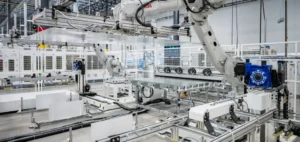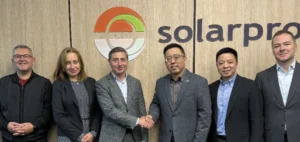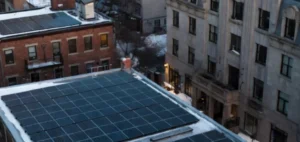The release by US Customs (CBP) of solar modules made from non-Xinjiang Chinese polysilicon, confirmed by Astronergy, marks a major turning point in the US solar sector. Since the implementation of the Uyghur Forced Labor Prevention Act (UFLPA) in 2022, only modules made from European, American and Southeast Asian polysilicon have been permitted. Authorization to import modules made from Chinese polysilicon could considerably increase the supply of solar modules in the United States, thereby changing market dynamics.
The Unique Context of the American Solar Market
The US solar market stands out clearly from the rest of the world. While production capacity for solar wafers, cells and modules is expanding in the USA and other countries, there are few plans for new polysilicon plants outside China. Polysilicon production is extremely energy-intensive and generates hazardous waste, making it costly and time-consuming to build plants in the USA. China, with its strong government incentives and low energy costs, has facilitated the growth of the polysilicon industry, enabling it to dominate 85% of the world’s polysilicon capacity.
Chinese Domination and Changes in Production
China dominates solar manufacturing across the value chain. By 2023, China will account for 85% of the world’s polysilicon capacity, a dominance that is set to increase further. The rest of the world’s share of polysilicon capacity is set to fall from 15% in 2023 to 12% by 2026, and much of this capacity is dedicated to the electronics industry rather than solar. When the UFLPA became effective in 2022, 57% of China’s polysilicon was produced in Xinjiang. However, following allegations of forced labor in this region, production was quickly moved to other parts of the country, notably Ningxia and Inner Mongolia.
Barriers and Implications of American Policies
Policies aimed at preventing the import of goods potentially manufactured with forced labor have prevented Chinese solar modules from entering the United States. This began in 2021 when the US Department of Commerce issued a Withhold Release Order (WRO) against Hoshine Silicon Industry Co (HSI), banning the import of HSI’s silica products. The UFLPA then extended the scope of the WRO to all goods related to the Xinjiang region, presuming that all goods from this region are manufactured with forced labor.
Potential impact on the US solar industry
The news of the release of Astronergy’s shipments is noteworthy because it could lead to lower prices for solar modules in the USA. Since mid-2022, one of the main factors driving up module prices in the United States has been the low availability of modules made from non-Chinese polysilicon. Non-Chinese polysilicon is priced US$7-10/kg higher than Chinese polysilicon, equivalent to a doubling of the price. Although this is only a single shipment, the release of these modules from Astronergy bodes well for future shipments of modules containing non-Xinjiang Chinese polysilicon. If more shipments of this type begin to enter the country, the USA will have access to a larger supply of modules made from cheaper polysilicon. The use of Chinese polysilicon could reduce module manufacturing costs by between US$0.02 and US$0.04/W, i.e. by 10-20%. If cost savings are passed on directly to customers in final prices, some Tier 1 modules delivered from Southeast Asia could soon fall below the US$0.30/W threshold.
U.S. Solar Manufacturers Compete with Imports
It’s still too early to say whether the release of Astronergy’s shipment will lead to a steady flow of Chinese polysilicon to the United States. However, should more Chinese polysilicon enter the country, the growing US manufacturing base will have to find ways to adapt to the potential arrival of cheaper modules. Companies could increase their competitiveness by sourcing low-cost Chinese polysilicon components. However, several layers of tariffs apply to Chinese components. Section 301 tariffs still apply to Chinese wafers and cells. In addition, cells made with Chinese wafers in Cambodia, Malaysia, Thailand and Vietnam will be subject to anti-dumping and countervailing duties from June 2024, unless suppliers can certify that they are not circumventing the orders. As a result, manufacturers unable to source non-Chinese wafers (either themselves or within cells) will have limited ability to reduce costs, even if both wafers and cells use Chinese polysilicon. Only a handful of companies can produce wafers outside China, and they generally use them in their own downstream products. These manufacturers will probably be able to produce the most cost-competitive home modules.
Other manufacturers will remain dedicated to using a non-Chinese supply chain wherever possible, including the use of non-Chinese polysilicon. These suppliers position themselves as the most reliable rather than the cheapest. These companies will need to educate their customers that mitigating the risks associated with trade policy far outweighs the cost premium associated with domestic sourcing.
The release of Astronergy’s solar modules by US Customs could mark a significant change in the US solar supply chain, with potential implications for module prices and the competitiveness of US manufacturers. This development underlines the importance of closely monitoring supply chain trends to anticipate changes in the solar sector.






















